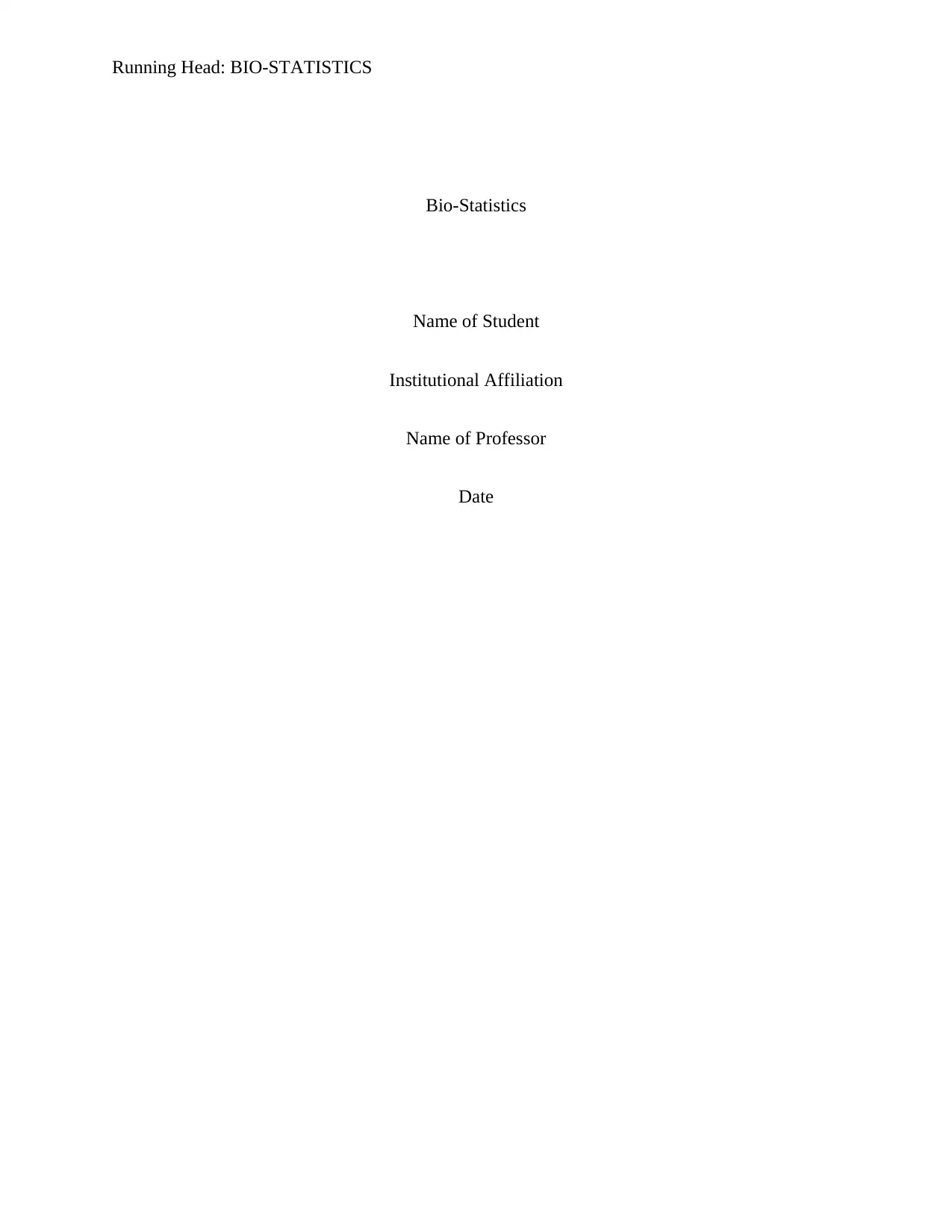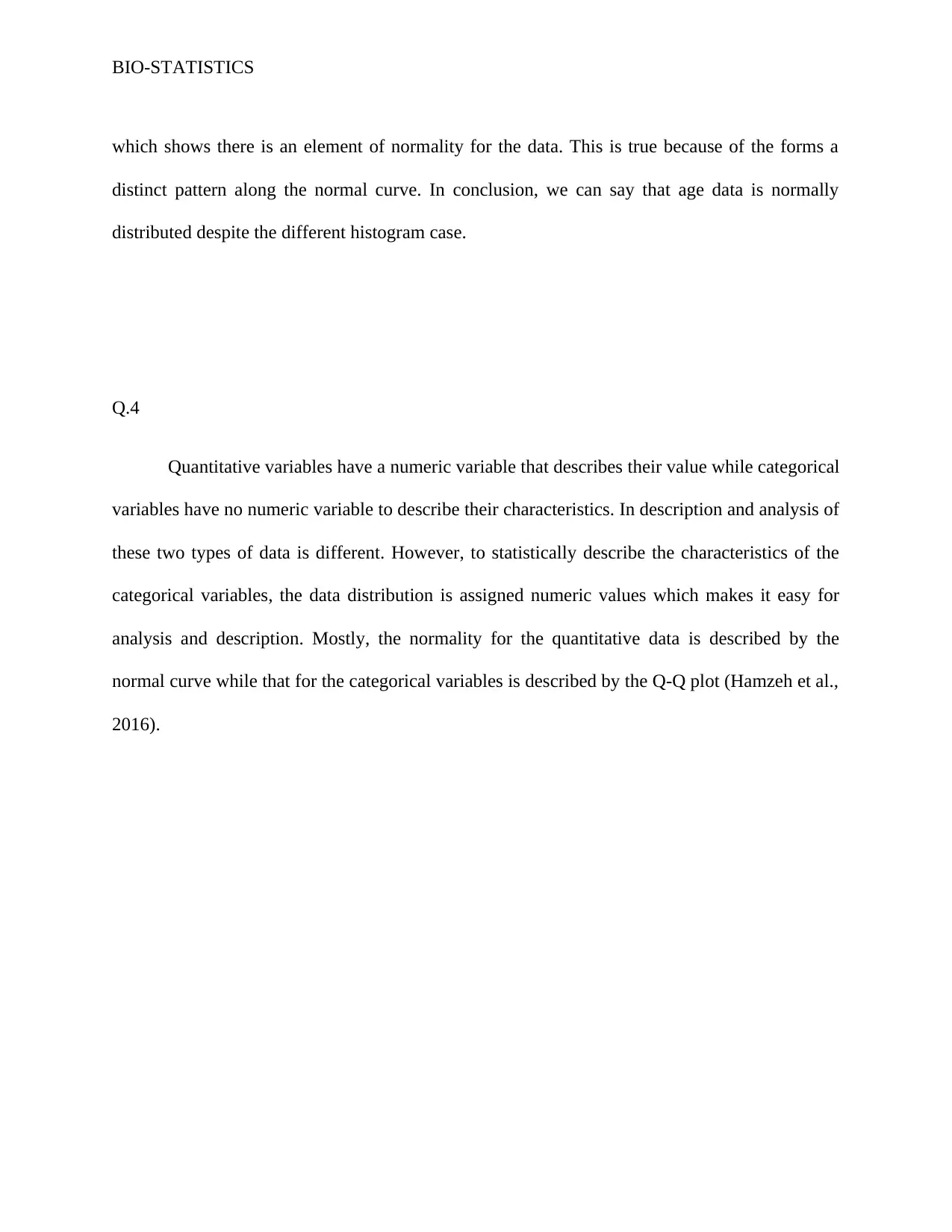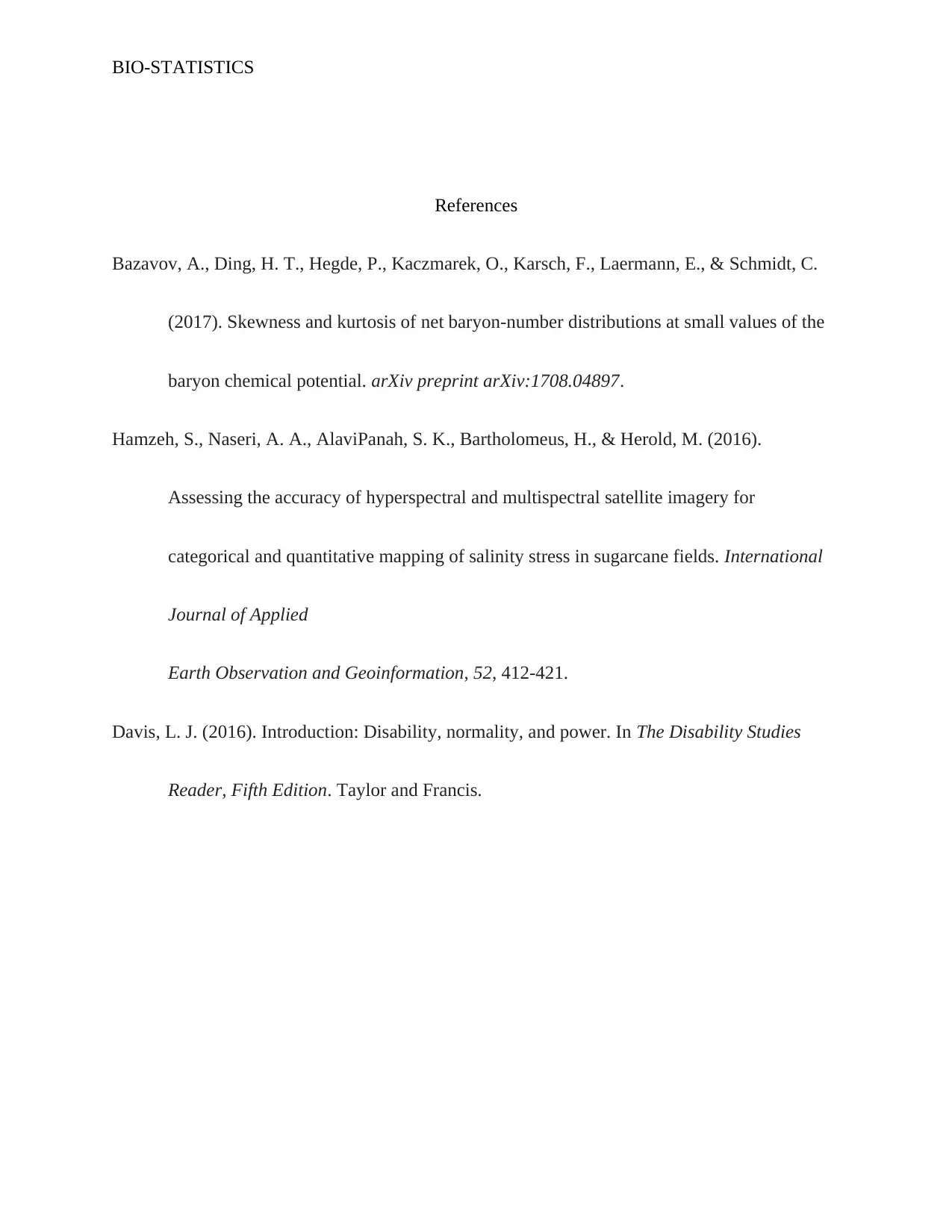Bio-Statistics Report: Statistical Analysis of Health-Related Data
VerifiedAdded on 2020/04/07
|5
|548
|70
Report
AI Summary
This report presents a bio-statistical analysis of provided data. The report begins by examining the smoking status data, detailing the percentages of current, former, and never smokers. The analysis reveals that the data is negatively skewed, a concept explained in terms of the distribution's asymmetry. The report further explores the age data, determining the median, minimum, and maximum values. It concludes that the age data follows a normal distribution, despite variations in the histogram. Finally, the report distinguishes between quantitative and categorical variables, highlighting how each type is described and analyzed statistically, with a focus on the normal curve and Q-Q plots, respectively. The report is supported by references to relevant literature.
1 out of 5











![[object Object]](/_next/static/media/star-bottom.7253800d.svg)